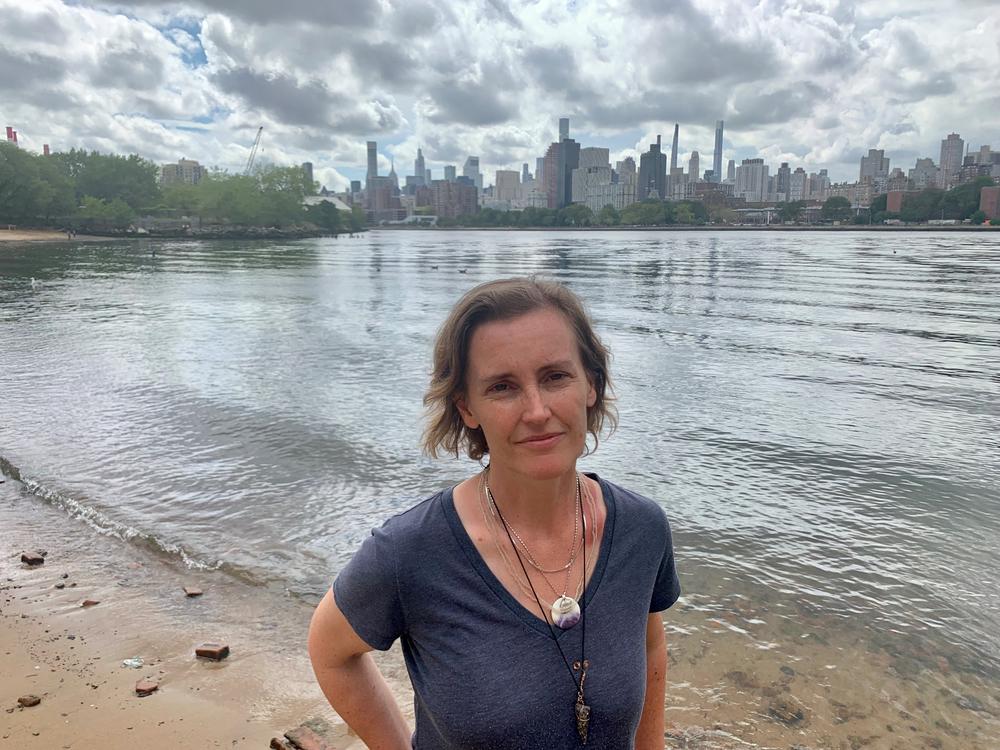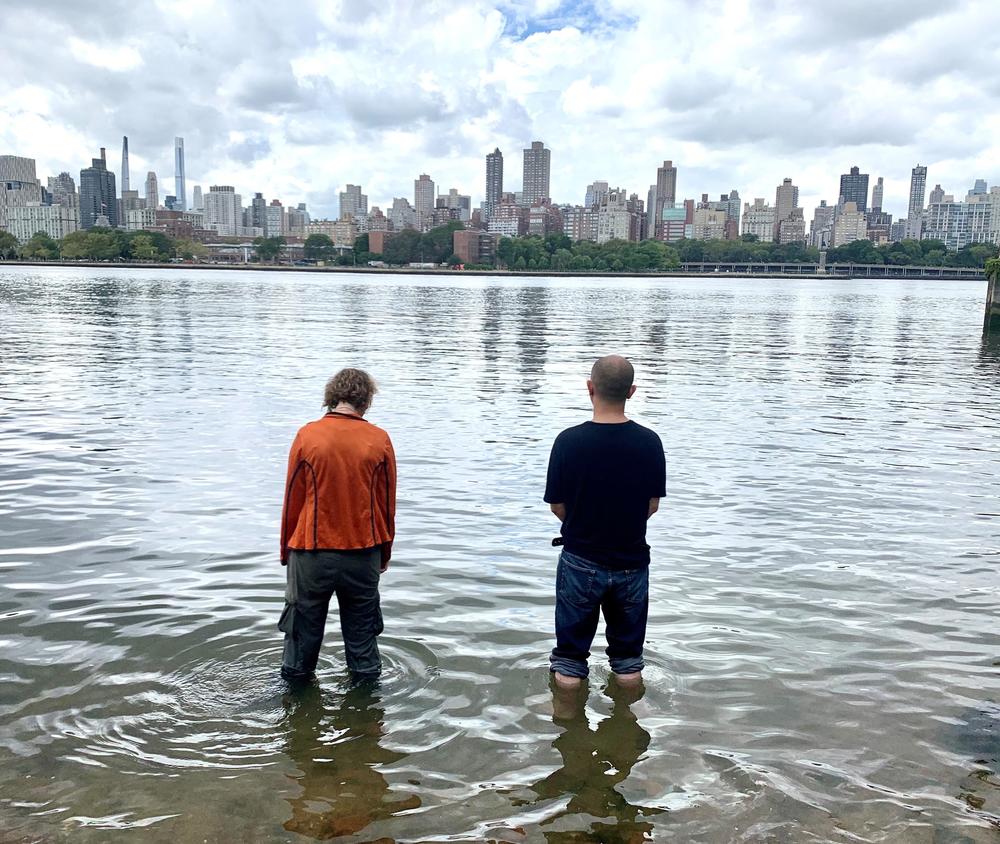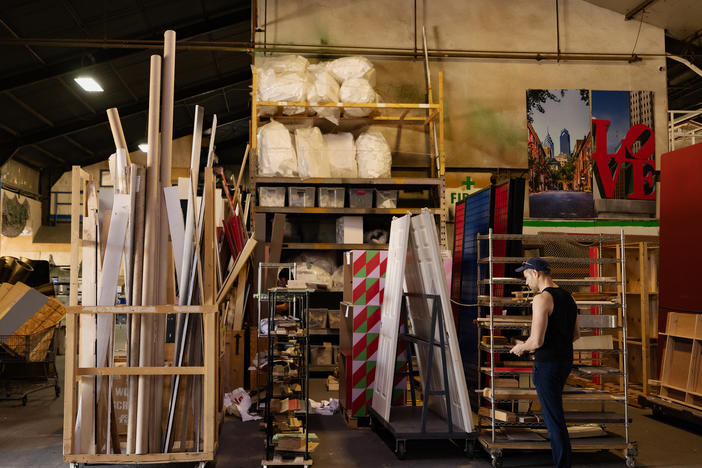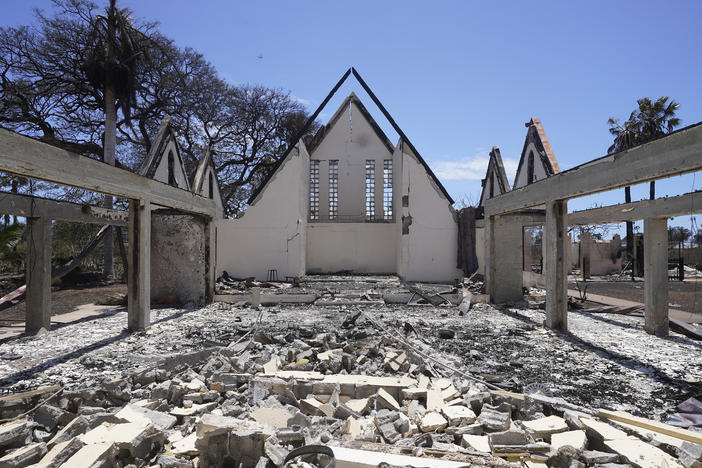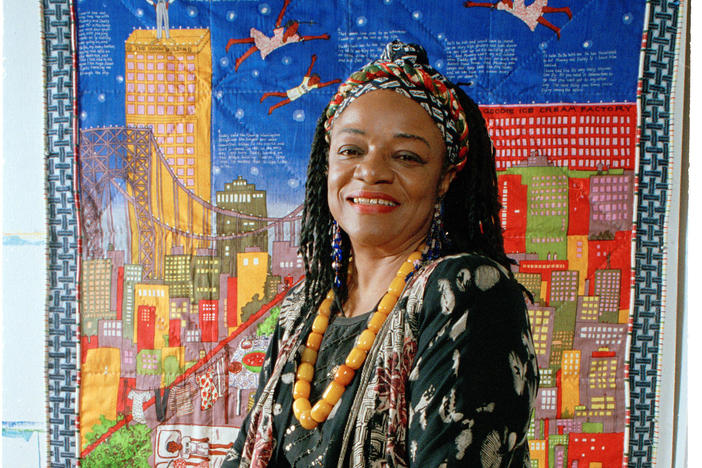Section Branding
Header Content
This artist gets up to her neck in water to spread awareness of climate change
Primary Content
Sarah Cameron Sunde, an interdisciplinary artist, was visiting Maine in 2013 when she noticed something in an ocean inlet. The tide was coming in quickly and completely covered a rock, making it disappear within 30-40 minutes.
It was her eureka moment, the inspiration she had been looking for since Hurricane Sandy devastated her adopted hometown of New York City a year earlier.
The tides struck her as the perfect metaphor for sea level rise, quickly transforming the shoreline in a matter of hours the way climate change will, to a much greater degree, over decades.
Three days later, after some planning and preparation, she returned to the inlet for a "durational performance." Sunde began standing at the edge of the water at low tide, and, in front of other artists from the retreat she had been attending, she continued to stand until the water rose up to her neck. She stayed until the next low tide, nearly 13 hours total.
"I had a moment that I remember very clearly where I was feeling the vastness of the water," Sunde said in a recent interview. "You know, it sounds a little bit cheesy to say, but I was feeling really connected to people on the other side of the planet."
Standing in that cold Maine water, Sunde decided that if she could last the entire tidal period, it wouldn't just be a one-off performance. She'd produce a series of events in coastal locations around the world to demonstrate the threat of climate change.
"There was a moment where I was like, you know, I'm this privileged person," she recalled. "If I'm feeling this this deeply, what are other people feeling—in the Global South especially? How are they dealing with it? And so, I felt like I had to know and understand and learn that."
Sunde has performed her project in eight other locations around the world. Above is a time lapse video of her in Kenya in 2019.
Sunde, supported by a Guggenheim Fellowship and a number of other grants, has since performed her work in places as far flung as Bangladesh, Kenya, New Zealand and the Netherlands. Her ninth and final performance is scheduled for Sept. 14 in New York City.
Planning, planning, planning
As her series has progressed, her "stands," as she calls them, have become increasingly complex. At each location, she gets involved with community members in some sort of environmental initiative. She now livestreams the productions and shows the videos later in art museums and elsewhere. And at the same time that she'll be standing in the water in New York City, collaborators in some of the other places she's performed will be doing their own stands, more or less simultaneously.
Preparations can be lengthy. She has to figure out where she should place herself so spectators can have the best view—in New York City, where she'll be standing on the Queens side of the East River, she wants to get the Manhattan skyline in the frame behind her. And, of course, she also needs to figure out how deep to go in the water so it will rise all the way to her neck at high tide—but not above her mouth.
At a practice stand in late August, a member of Sunde's team, Bella Gallo, unfurls a long rope and sits on a log on the narrow strip of beach where the event will take place. Using a compass to determine the angle, and different knots in the rope to determine the distance, they can determine exactly where she should be at low tide to create the best visual effect.
"I've learned tidal predictions are only predictions. Nothing is guaranteed," Sunde says with a laugh. "That's why I come here a lot. Because when I'm out here all the time, that's how I get to know her, this collaborator of mine—the cove."
Meanwhile, an artist and friend of Sunde, Pamella Allen, is searching for artifacts she can use in an accompanying art work that she'll create on land. A detached buoy that's come in and out with the tides over the past several months catches her eye.
"The buoy will be a central part of it," Allen says. "It keeps coming back. So, it feels like it's a touchstone between the water, the land and the people."
Another team member, Christopher Bisram, grew up nearby and does outreach for Kin to the Cove, a community group Sunde organized that's been conducting beach clean-ups.
"My mom would come a bunch of times with me and I just thought it was a dirty beach," he says. "And then Sarah kind of brought in this awareness of, it's human beings that kind of caused this and we can fix it. So if we just work towards fixing it, then it can happen, right?"
Putting herself out there
Over the course of the afternoon, passers-by look over the seawall to watch Sunde's team and try to make sense of what they are doing. Some of them end up agreeing to help out and show up on the day of the performance, either to watch or stand in the water with her.
"It sounds very daring," says Christopher Calderhead, a neighborhood resident. "You're exposing your body to the elements and sometimes there's a wake, which makes waves in this cove. So, you're taking whatever nature's going to hand out to you and you've got to stay put."
The physical aspect of the work is clearly part of its power. Sunde was 36-and-a-half-years old when she performed her first stand in Maine. (The name of her project is "36.5: A Durational Performance with the Sea.") Now, she's 45. So, to prepare, she is doing yoga, watching what she eats, and taking pains to make sure she'll be free on the day before the performance.
"I'm obsessed with telling everyone that the 13th is a rest day," she says. " I'm 99 percent sure something's going to happen that I'm going to have to deal with, but I'm really trying to hold it as a rest day."
For more information about Sunde's project and the New York City performance, visit her website.
Copyright 2022 NPR. To see more, visit https://www.npr.org.
Bottom Content

